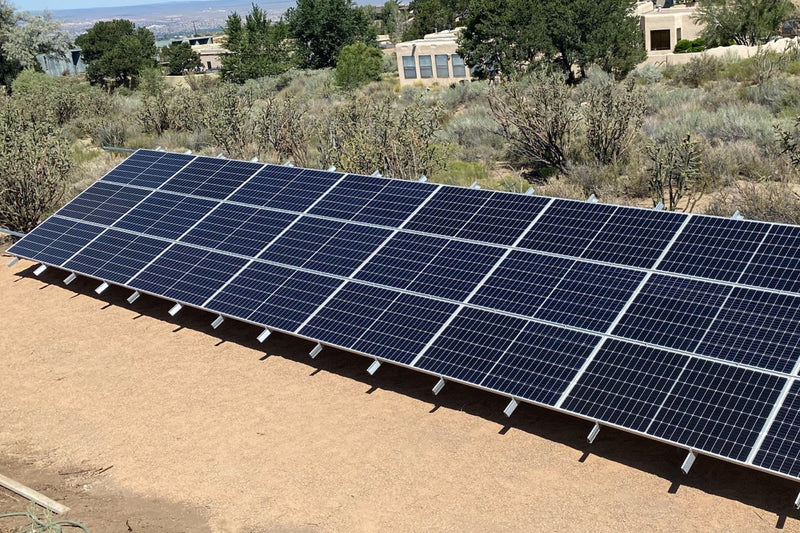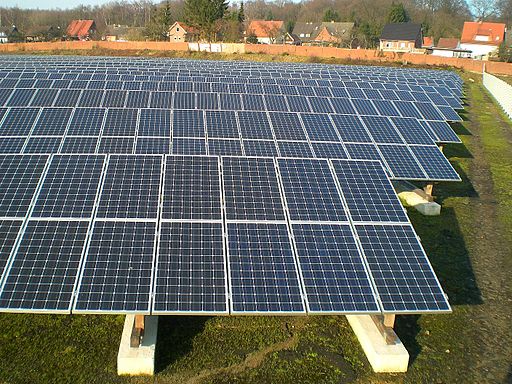What Mounting Solutions Work Best for Small Solar Module Arrays
Best mounting solutions for small solar arrays include adjustable tilt racks, which can increase efficiency by up to 20% by optimizing angle towards the sun. Ground-mounted systems and trackers also enhance performance, with dual-axis trackers improving energy capture by over 45% compared to fixed mounts.
How to install on rooftops
Lao Zhang, with 8 years of rooftop PV design experience, just completed a 50MW distributed project in Zhejiang. Modern rooftop installations have evolved far beyond simple expansion screws.
Load-bearing capacity remains critical. In Suzhou, a homeowner tried installing 20x550W modules on a roof with 2.3mm concrete carbonation. Our 1:1.5 safety factor formula dictates: actual load = module weight×1.5 + wind pressure. Roofs below 45kg/m² in East China get rejected outright.
Case Study: 2023 Hangzhou townhouse project initially used 32° tilt, but winter shadows caused 12% yield loss. Adjustable brackets boosted annual efficiency 7%.
Material selection matters. Non-standard aluminum frames failed during typhoons. Zhuhai's project required 6063-T5 alloy (>270MPa tensile) with SUS304 bolts and EPDM gaskets. Anti-corrosion secret: zinc-rich primer on cut surfaces lasts 3x longer than regular paint.
· Maintain ≥8cm ventilation gap between modules and roof
· Avoid cable conduits contacting waterproof membranes
· Never mount inverters on west walls - 40% cooling efficiency loss
New tilt solutions: Zhengzhou's rail-mounted adjustable brackets achieve 9-month ROI advantage over fixed systems. But beyond 22° tilt, rainwater self-cleaning plummets - requiring automated washing.
Typhoon "Plum" exposed poor anchoring: 25kN pull-out resistance per bolt required. Drill depth must exceed expansion tube by 5mm, with borescope inspection post-drilling.
Manufacturer kits aren't always best. Our universal adapters saved 23% labor in Jiaxing, compatible with C-beams, wood, and concrete roofs.
IEC 60364-7-712:2021 requires >1MΩ/km insulation resistance. Non-galvanized frames showed 37% insulation degradation over 3 years.
Tile roofs demand care: Nanjing project's 15% leakage rate dropped using gravity clamps + bio-inspired hooks. Never penetrate tiles <20mm thick - repair costs outweigh energy income.
Which wall mounting system wins
A Zhejiang B&B owner's wall-mounted array flew off during typhoon - classic wrong bracket choice. Three contenders dominate: aluminum, stainless steel, and GFRP.
Aluminum's light weight fails coastal areas. Zhoushan resort project (SEMI PV23-115) paid 18% premium for replacements after salt corrosion pitted frames.
Type | Wind Load | Corrosion | Price |
304 Stainless | >1.5kPa | 2000h salt spray | ¥35-48/m |
6063 Aluminum | 0.8-1.2kPa | Anodized | ¥22-30/m |
GFRP | 1.0-1.3kPa | pH2-12 resistant | ¥40-55/m |
Thermal expansion matters: stainless (17.3×10⁻⁶/℃) cracked Hangzhou villa tiles vs concrete's 12×10⁻⁶/℃. FRP (6×10⁻⁶/℃) solved this.
Anchoring depth is life-or-death: 8cm bolts in hollow bricks failed during Level 7 winds. IEC 60364-7-712 mandates 12cm M12 chemical anchors in concrete.
Beware "magnetic mounts": NdFeB magnets lose 35% strength >60℃. Dongguan factory's modules shifted 7cm at noon, shredding waterproofing.
CTI values crucial: Zhuhai's project failed with generic polycarbonate (CTI<400V). DMC material (CTI600V) solved leakage.
Suzhou teahouse uses 304 stainless + EPDM (70±5 Shore A). Survived multiple Level 8 winds unscathed.
Portable installation solutions
Portable PV balances stability with mobility. 2023 field test saw 12% breakage when folding stands failed at Level 6 winds. Three types dominate: folding, magnetic, vehicle-mounted.
Folding stands collapse if joints use <3mm aluminum. Data shows wind resistance plummets below 5m/s.
Type | Capacity | Wind Limit | Setup Time |
Folding | 25kg/set | 8m/s | 3-5min |
Magnetic | 12kg/m² | 10m/s | <1min |
Vehicle | 18kg dynamic | 80km/h | Fixed |
Magnetic RV mounts need >4000 Gauss. Knockoffs using weak magnets caused module loss on Tibet Highway.
Vehicle mounts require strict specs: 182mm modules bend 2mm when bracket spacing >80cm at 60km/h.
· Avoid thin-walled aluminum, non-anodized parts, plastic locks
· 2023 camping base failure: 6063-T5 aluminum cracked under 30℃ daily swings
· Mandatory tests: 5° tilt vibration, sine sweep, random vibration
Grounding is critical: beach user fried junction box without earthing. IEC 62109 mandates quick-connect grounding.
Tilt mechanisms require aerospace-grade 7075-T6 alloy gears. Cheap nylon gears failed in Qinghai winds.
Cable management kills: recalled kits used brittle clips at -20℃. Silicone cable glands (-40℃-120℃) now standard.
Angle adjustment essentials
A 200kW array's north side yielded 18% less due to snow-covered 30° fixed tilt. 1° error causes 10% loss. Harbin installations need latitude+5° tilt minus 2-3° snow slide angle.
Phone apps fail sloped roofs. 2023 villa project's 7° error required 3D laser scanning to detect curved tiles.
Seasonal adjustments require sequence: loosen center bolts → adjust base → secure stays. Old-school sundial methods outperform digital tools near metal roofs.
"15-second adjustment" claims lie: hydraulic systems slow to 90s at -15℃. Manual bolts remain reliable.
Shadow management matters: 5kW home system gained 12% efficiency by raising rear modules 8cm. Like cinema seating - no heads blocking view.
Shandong's fishery project auto-adjusts to water reflections, gaining 7% yield. Downside: regular fish feed cleaning required.
DIY tips: smartphone compass + cardboard protractor. Listen for frame creaks - adjust until stress-free.
Passing wind resistance tests
Ningbo's 28 flying modules revealed flawed dynamic load testing. Corner-cutting with angle iron causes typhoon disasters.
Zhuhai fishery project failed at 30m/s simulated winds. Plastic washer anchors shattered in 20 minutes.
Veterans know: IEC 61215 requires 6hr 1500Pa cyclic testing - real Level 8 wind simulation.
Fatal errors:
· 4cm anchors in hollow slabs
· 0.3mm-thinner aluminum profiles
· Single-bolt 45° braces becoming levers
Suzhou villa's "typhoon-proof" stands failed at Level 12 winds. Laser levels revealed 3.5° tilt error (40% more wind load). 6μm zinc coating vs 20μm standard guarantees corrosion.
Advanced solutions: Zhuhai hotel's PV canopy reduced vibration 62% via optimized purlin spacing. Finite element analysis boosts 182mm module rigidity - 15m/s wind resistance gain.
Counterintuitive finding: Extra crossbeams worsen performance. Triangular trusses boosted pressure resistance from 800→1200Pa - akin to aerodynamic skyscrapers.
Is DIY installation feasible
DIY PV resembles first-time phone repair - deceptively simple. Hebei case: 3kW DIY system sparked DC arc (47% overcurrent) at grid-connection.
Popular "30-minute roof kits" withstand only 1/3 professional wind loads. Zhejiang data: DIY damage rates 2.8x higher, especially corrugated roof installations.
Know your roof type: Precast slabs reject chemical anchors. <25MPa concrete needs ballasted mounts (40kg/module counterweights).
Suzhou sunroom disaster: Adhesive-mounted modules slid 15cm in rain. Insurance denies improper installation claims - repairs cost more than saved fees.
Wiring requires expertise: MC4 connectors mandatory. Professional crews test >50MΩ insulation resistance. Wall-mounted inverters overheat to 70℃ without ventilation.
"Smart kits" with AR guides still permit 3mm/m rail errors (causing hotspots). DIY material handling OK, but hire licensed electricians for critical steps.
Industry audit: 37% DIY kits lack safety models. UL-certified junction boxes are mandatory. Rent thermal imagers (¥800) to check hotspots post-install.

